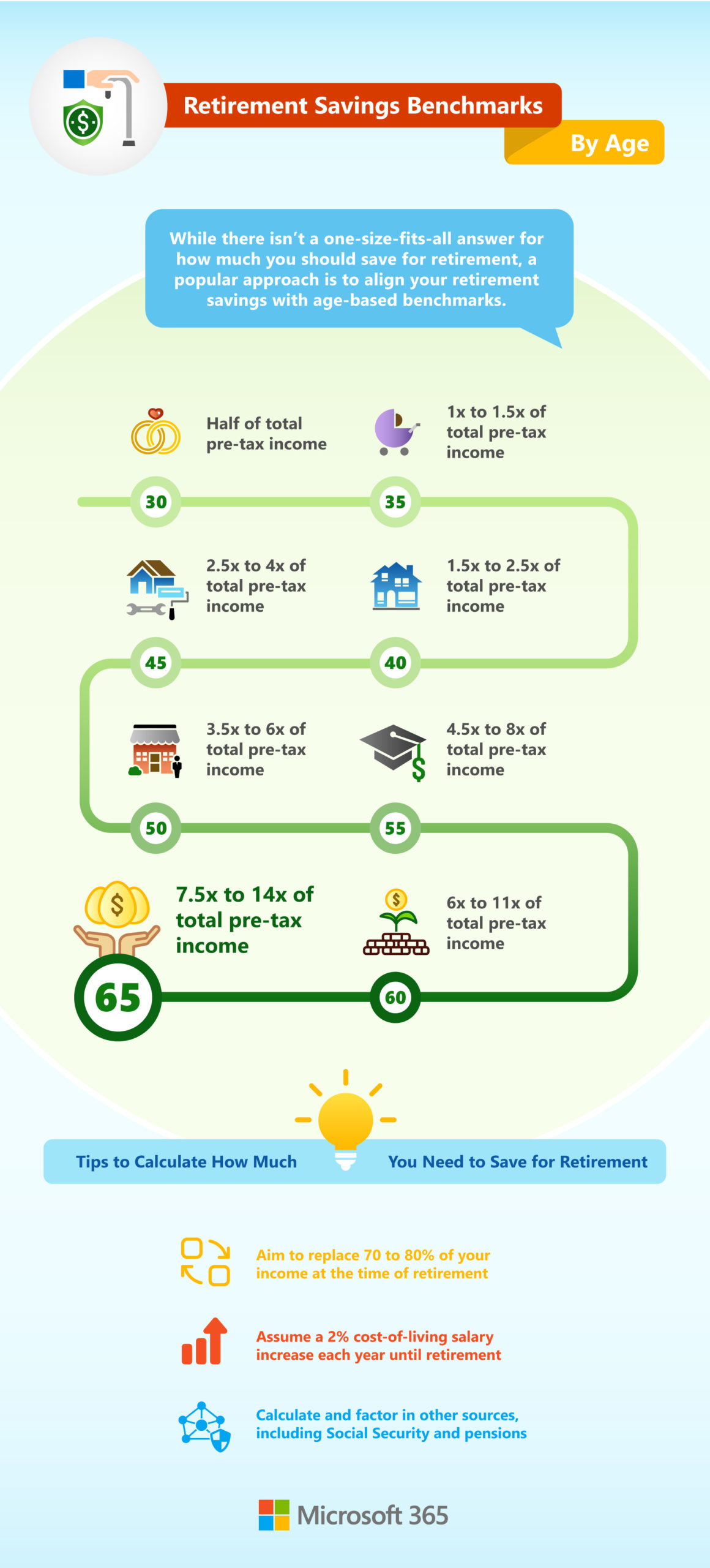How Much Should You Save for Retirement?
Ask five financial experts how much you should save for retirement and you’re likely to receive five different answers. There are plenty of rules of thumb a saver can turn to—or find themselves confused by. Should your savings goals be based on a monthly amount or a total you want to reach? How does retirement age factor into the equation? What about Social Security—should you be counting that in your retirement savings benchmarks and totals?
One common approach is to aim to replace 70 to 80% of your annual pre-retirement income, with an assumption that you will earn at least 2% cost-of-living raises each year you work.
To set yourself up for retirement savings success, start by deciding how much you’ll need to spend during retirement. Research costs for housing, healthcare, and day-to-day needs. Once you have a few totals in mind, try using one of the many online retirement savings calculators—like the retirement calculator offered by the Social Security Administration—or experimenting in Microsoft Excel to find the right total for you to save toward.
Age-Based Retirement Savings Benchmarks
One way to figure out how much you should save for retirement—and track your retirement savings goals—is to follow retirement savings benchmarks based on age. These age-based benchmarks are typically calculated using both the saver’s age and current income, and include all forms of retirement savings:
- 30: Half of total pre-tax income
- 35: 1x to 1.5x of total pre-tax income
- 40: 1.5x to 2.5x of total pre-tax income
- 45: 2.5x to 4x of total pre-tax income
- 50: 3.5x to 6x of total pre-tax income
- 55: 4.5x to 8x of total pre-tax income
- 60: 6x to11x of total pre-tax income
- 65: 7.5x to 14x of total pre-tax income
As you can see, thanks to salary growth, compounding interest, and dividends, retirement savings benchmarks increase exponentially every five years.
While age-based retirement savings benchmarks are easy to understand and convenient, they’re not a replacement for thorough financial planning. But no matter when you start to save for your retirement, you can’t go wrong by simply getting started and setting appropriate goals for your current and future financial needs.








